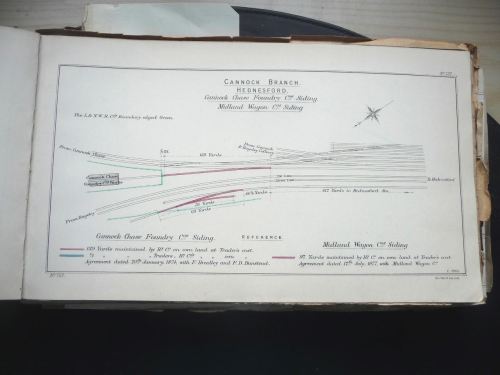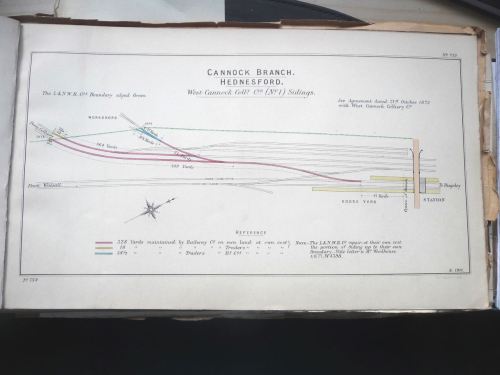On my Brownhills Walk earlier in the year, I took some photos along the Wyrley and Essington Canal Anglesey Branch. One in particular made me wonder – what was there before the M6 Toll? Then we had the collection of old photographs from Laurence Hodgkinson and there was the answer:
Then we had the collection of old photographs from Laurence Hodgkinson and there was the answer: Taken in 1966, a level crossing over Wharf Lane and the railway line, as straight as an arrow, down to Anglesey Sidings/Charrington’s depot/transport yard. You can even see one of the large storage tanks in the distance.
Taken in 1966, a level crossing over Wharf Lane and the railway line, as straight as an arrow, down to Anglesey Sidings/Charrington’s depot/transport yard. You can even see one of the large storage tanks in the distance. This is the view from Wharf Lane canal bridge,
This is the view from Wharf Lane canal bridge, and this is a similar view now.
and this is a similar view now. The trackbed still looks straight – what you can see of it!
The trackbed still looks straight – what you can see of it! And on to Newtown Bridge!
And on to Newtown Bridge!
There were a number of old buildings to the left of Wharf Lane, including the old stables and a water tower.
 I wonder who’s got the ‘Whistle’ sign?
I wonder who’s got the ‘Whistle’ sign?
These railway remains were the line from the collieries down to Anglesey Sidings where the line joined the LNWR line from Wychnor to Bescot – nowadays more commonly known as the Lichfield to Walsall line. From there the coal could transported to just about anywhere in the country, although a lot of it was used in the Black Country.
The colliery involved in this railway was the Cannock Chase Colliery Company, which ultimately had 10 pits in the area, although they weren’t all in operation at the same time. In the very early years of No.1 and 2 collieries, the canal was mainly used, but then McClean completed the rail system. Since McClean owned both the coal and rail companies, the canal was hardly used between 1857 and 1861, but then McClean gave up his lease on the railway company and canal sales increased to about one third of the company’s output. The end of the Colliery line at Anglesey Sidings. Cannock Chase loco No.6, a Sharp Stewart 0-6-0ST 2643/1876. This picture, taken 21/7/1936 also shows Hammerwich Church in the background and the signal box on the Lichfield to Walsall line.
The end of the Colliery line at Anglesey Sidings. Cannock Chase loco No.6, a Sharp Stewart 0-6-0ST 2643/1876. This picture, taken 21/7/1936 also shows Hammerwich Church in the background and the signal box on the Lichfield to Walsall line.

 As can be seen, the folder itself is rather fragile, but the diagrams inside are in very good condition.
As can be seen, the folder itself is rather fragile, but the diagrams inside are in very good condition. Anglesey Sidings
Anglesey Sidings Cannock Branch, Hednesford – the shed on the centre-left of the photo is the original HQ of the Railway Preservation Society.
Cannock Branch, Hednesford – the shed on the centre-left of the photo is the original HQ of the Railway Preservation Society. Cooper’s Junction, near to the Cannock Wood Colliery
Cooper’s Junction, near to the Cannock Wood Colliery Hednesford Station area, showing the sidings coming from the Pye Green Valley – West Cannock No. 1 Colliery.
Hednesford Station area, showing the sidings coming from the Pye Green Valley – West Cannock No. 1 Colliery. Holly Bank Colliery
Holly Bank Colliery 








